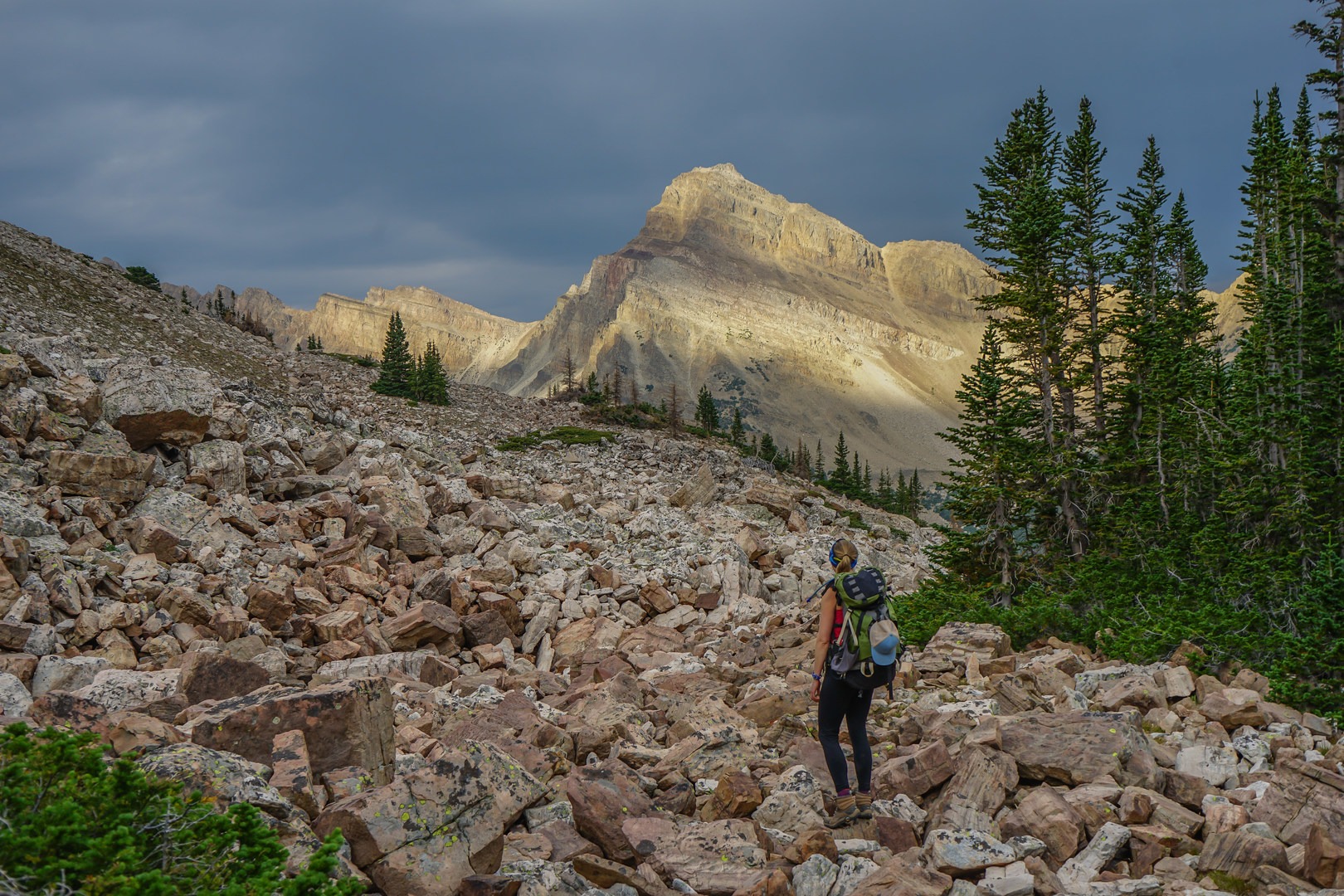You are here
Outside of Utah, the Uinta Mountains are not well known. The Uintas contain all of Utah's 13,000-foot peaks and its most beautiful and abundant alpine wilderness. There are few mountain ranges that can compete with the backcountry opportunities that the Uintas present. With the average peak around 12,000 feet, the Uintas have abundant above-tree-line terrain, the second most of any mountain range in the Lower 48. Thousands of lakes dot this alpine wilderness, as well as countless streams and meadows. Simply put, the Uinta Mountains are a haven for backpackers and serious backcountry enthusiasts.
While not nearly as popular as Colorado 14ers, bagging Utah 13ers is slowly becoming a more popular activity. That being said, every 13er in Utah other than Kings Peak sees very few ascents per year, and you are likely to have the mountain all to yourself if you can get there! The most significant difference between Colorado 14ers and Utah 13ers is round-trip hiking distance. The closest Utah 13er to a trailhead comes in at around 17 miles, with the farthest just over 30. All Utah 13ers are incredibly remote and require off-trail hiking for miles. Unlike Colorado 14ers, there is not an abundance of information on these peaks, so route finding and unknown conditions will definitely exist. Because of all this, bagging Utah 13ers is very hard and even more rewarding. Views from 13,000 feet in Utah's largest wilderness area are second to none.
NW Wasatch Peak, also known as Wasatch Benchmark, is a rather obscure 13er that sees very few summit attempts each year. NW Wasatch comes in at 13,039 feet and is surrounded by Utah's most rugged grouping of mountains. To hike NW Wasatch, you must hike through one of the most beautiful mountain basins in the Rocky Mountains and one of the most picturesque basins in the state of Utah. West Fork of Blacks Fork sits on the North Slope of the Uintas and is very remote. West Fork of Blacks Fork contains massive alpine meadows that seem to stretch for miles upon miles, while the West Fork of Blacks Fork River meanders through the middle of the basin. Both 12,000- and 13,000-foot peaks make the rim of the basin, creating a backdrop that is hard to beat.
Driving to the West Fork of Blacks Fork Trailhead can be difficult, as it requires over 20 miles of dirt road driving, with the last 4 to 5 miles being somewhat rough. It is advised that all trail users not follow the road through the river, as this can be environmentally damaging. It is best to drive your car up West Fork of Blacks Fork to the first river crossing, and begin your hike there. This only adds an extra mile one-way.
Once hiking, walk to the official trailhead and head straight into the heart of West Fork Blacks Fork. Meadows start appearing immediately, and the hike is exceptionally beautiful. It is about 5 miles from the official trailhead to the spot where the ridge running down from NW Wasatch is closest. Camp anywhere in this general region.
The easiest and most practical way up NW Wasatch is the northwest ridge, which runs down into the West Fork of Blacks Fork basin about 5 miles from the trailhead. From camp, you must ascend off trail about 1,000 feet up a steep forest to actually gain the ridge proper. Once on the ridge you will reach boulders, and from here on out the going is very tedious. NW Wasatch is known for its shifting boulders, so be very careful when boulder hopping here. Continue up the northwest ridge all the way to the summit and return down the same way that was ascended.
Climbing NW Wasatch is very straightforward route wise, but it is a very difficult hike. The round-trip distance is between 17 and 19 miles with 5,000 feet of climbing. The boulders on the northwest ridge seem to go on forever and can be very loose. It is a good estimate that from base camp, it takes about six to seven hours to summit and return back down to camp. That being said, climbing NW Wasatch is a true wilderness experience that few people will accomplish, and with the proper fitness and route finding skills, it is a very attainable summit in the heart of Utah's High Uintas Wilderness.
Logistics + Planning
Current Weather: Powered by Dark Sky






























Comments
Sign In and share them.